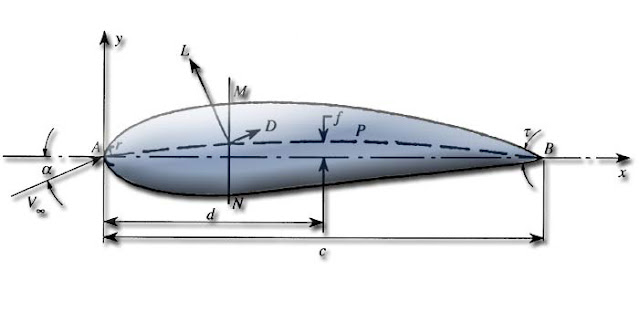How Ceiling Fan Blade Affects Ceiling Fan Quality And Performance
A good ceiling fan blade design is the most important for the ceiling fan performance
A good design must be able to provide smooth airflow without any noise or vibration. The blade should also be durable enough so that it can withstand different weather conditions in your home or office.
Airfoil design
Airfoil is a shape which has been designed in such a way that it creates an area of low pressure behind it as it moves through air (or any fluid). The pressure difference between high pressure zones in front and low-pressure zones behind results in propulsion. Airfoils are commonly seen on airplane wings and car windshields, where they create lift or downforce respectively. Airflow over these surfaces causes them to be more aerodynamic than their flat counterparts, allowing them to fly through the sky at faster speeds while requiring less energy from their engines or tires respectively; this effect is called stall recovery speed-up effect because there are no adverse effects on maneuverability due to increased drag due to higher speeds
Airfoil shape
This means that when you have a ceiling fan running with its blades facing outwards, they are acting as aerodynamic surfaces pushing back against the flow of air around them, creating drag. As speed increases, pressure decreases and lift increases; so while some people might think it would be better if their blades faced down towards their feet instead of up above their heads, it turns out this could actually cause more problems than it solves!
This is because if you have your blades facing downwards at any angle other than straight up or straight down, then there will always be some degree of drag which depends on how much downward angle there is between where your blade tip meets the floor versus how far away from vertical/flat-topped surface level your base sits upon (as well as how big all those factors are). And since we already know about Bernoulli's Principle: Increase Flow Speed = Increased Pressure = Decreased Lift = More Drag; then imagine what would happen if one person claimed responsibility for making sure no such thing happened during assembly time."
Airfoil length
The length of your ceiling fan's blades should be measured from tip to center when you select new ones for your existing unit or when shopping for a new one to install yourself—if you prefer DIY work over hiring someone else to do it all for you! Your best bet is always going to be getting expert advice from professionals who know what they're doing when it comes time to replace those old ones in order
to make sure everything goes smoothly without any surprises along the way--like having someone come over only after realizing there were some parts missing due (whoops!).
Airfoil finish
- Polished Finish – The most common type of finish on a ceiling fan blade is the polished finish, which has an even shine across the entire blade surface. This type of finish is also considered to be the most durable and cleans up easily with a simple paper towel or microfiber cloth.
- Matte Finish – A matte-finished blade has less shine than a polished blade, but still provides good protection against scratches and dents in your home’s decorating scheme (which makes it ideal for those who have kids or pets). While this option does not come with added durability like you would get from a polish, it does make cleaning easier since dust will not stick to its surface as easily when compared to other options available at your local hardware store today!
Blade width and span
Blade width and span are the two most important factors in fan performance. Blade span is the distance from the center of the fan to the edge of the blade, while blade width is the distance from the edge of a blade to its midpoint. A ceiling fan with a longer blade will move more air than one with a shorter one, but this does not necessarily mean that it will be better for your space. It all depends on your needs and preferences: if you need more airflow for cooling purposes than having a high number of blades available then go for something with fewer blades. If you want less noise as possible but still good quality then choose one with more blades so they can overlap each other when they spin around at different speeds while being pushed by currents created by moving air coming out from underneath them (this happens because these fans are installed into rooms where there's less pressure that causes low-pressure zones).Blade Types
- The two most common types of ceiling fan blades are wood and acrylic.
- Wood blades tend to be more expensive, but they also tend to last longer than acrylic blades. This is because wood doesn't absorb moisture as easily as acrylic does, so it won't warp or break as easily.
- Acrylic blades are easier to clean and get dirty less frequently than their wooden counterparts, making them great for people who have pets or live in humid areas (like Florida). However, because of their composition, acrylic fans may not spin at quite the same speed as wooden ones since they're lighter than the former material type; additionally, if you've got high ceilings—say above 10 feet—you'll need a higher wattage motor with an acryllic blade in order to get sufficient air flow throughout your home without overworking yourself unnecessarily through increased energy consumption costs!
Blade pitch
Blade pitch is the angle of the blade to the air stream, and it affects both speed and performance.The higher the pitch, the more downward force is exerted on the fan’s blades. This means that higher pitch blades work best in rooms where there is high ceiling clearance above them (such as outdoors). In a room with low ceiling or even no ceiling at all (such as an outdoor porch), low blade pitches can be used so that they don’t hit anything during operation.
Blade pitch should ideally be between 5 and 15 degrees depending on your needs.
Blade material
The materials used in making the blade can affect the quality and performance of your ceiling fan. There are several different options to choose from, including plastic blades, metal blades, or acrylic ones.The material used for making the blade is another important factor that affects the quality and performance of a ceiling fan. The most popular materials include:
- Wood
- Metal
- Plastic
- Acrylic
Choosing the right ceiling fan means understanding the role of each of the aspects of the fan blade
Choosing the right ceiling fan means understanding the role of each of the aspects of the fan blade. For example, a key factor in choosing an energy efficient and safe ceiling fan is taking into consideration its blade design and material.This article will discuss these considerations for three types of blades: solid wood, composite/polymer/plastic, and steel.








Comments
Post a Comment